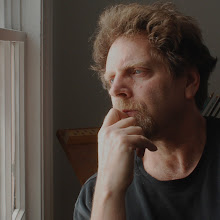

A diverse, retrospective range of work by Italian Neo-Constructivist, Carlo Severa, is on show at the Accademia delle Arti del Disegno in Florence. The Accadamia, as it happens, faces the same picturesque square as the San Marco monastery of the previous suite of entries.
Severa has a particular instinct for paper, its colors, textures, absorptions as well as the dimensional effects of folding. Another cheer for paper.
The rippled effect of accordian-folded strands of paper laid edge to edge resembles the weave of an antique Canadian basket displayed in my mother's minute (but widely visited) accademia of pioneer arts and design.
Small wonder I gained a Shaker-like zeal for simple forms, knocking around these ancestral implements as a kid. One summer morning I set about mowing a field of alfalfa just like a Tolstoyan peasant, with a century-old scythe in hand. But I digress.





















